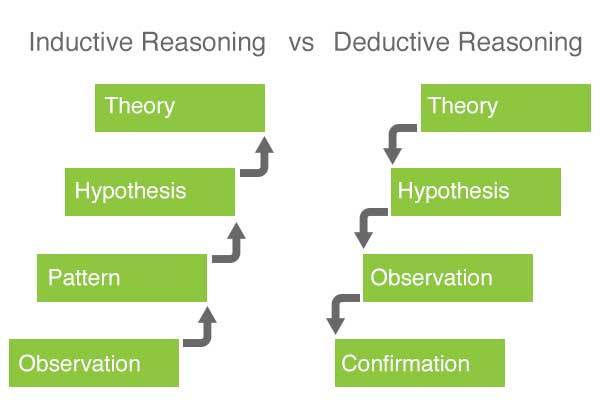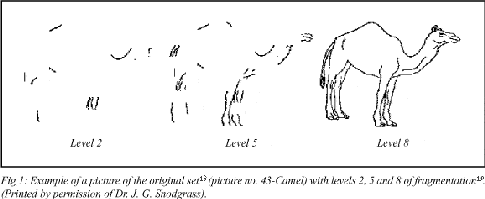Have you noticed that certain people are more persuasive than others? Is it possible for us to improve our persuasion skills? Yes, you just need to master this technique: syllogistic reasoning.
Let’s now take a look at how this technique works and how you can apply it in daily life.
What Exactly Is Syllogistic Reasoning?
Syllogistic reasoning is a form of deductive reasoning. If we look at the difference between deductive and inductive reasoning, we can see how the approach is flipped. Let’s compare this by way of an analogy. Inductive reasoning is much like an artistic painter who combines various colors together to form a painting. By contrast, deductive reasoning is like a sculptor removing material until the artist reveals what she wishes to portray.”
So, what exactly is syllogistic reasoning?
Syllogistic Reasoning means the use of syllogisms to deduce arguments that draw conclusions from two premises–a major one and a minor one. [1]
Here’s an example of Aristotle’s Syllogism:
- All humans are animals.
- All animals are mortal.
- Therefore, all humans are mortal.
In this example, we have a logical argument in which a pair of sentences serve as the premises, where the third sentence is the conclusion. A syllogism can be labeled as valid if the premises are true, where it would follow that the conclusion is also true. [2]
How Mastering Syllogistic Reasoning Will Benefit You A Lot
- Intelligence. In a 2011 study, researchers found a close association between syllogistic reasoning and intelligence. They found that syllogistic reasoning is key to our IQ.
- Objectivity. Researchers and mathematicians typically use syllogistic or deductive reasoning when testing whether a principle is true or not. The scientific method uses deduction to test hypotheses and theories. This provides them the advantage of objectivity and certainty. For example, when we say, “If X, then Y” demonstrates that Y is true if X is true. [3]
- Not affected by new premises. In an inductive argument, when you find new evidence (premises) the argument is affected, where a deductive argument is not. Let’s look at an example.[4]
- “Today, John said he likes Romona. So, John likes Romona today.” However, this statement is radically changed when we add a new premise. “John told Felipe today that he didn’t really like Romona.”
But Beware of the Loopholes in Syllogistic Reasoning As Well…
- Syllogistic fallacies. One of the advantages to syllogistic reasoning was objectivity. Recall the statement, “If X, then Y.” But what happens if X is not true? The following illustration demonstrates this perfectly.
- Affirming the consequent. This is one of Aristotle’s 13 fallacies and is defined by assuming an “If Then” statement is commutative. Think in terms of mathematics, where one term operating on a second is equal to the second operating on the first (a x b = b x a). Here is an example: I am in London, England. I am in England, therefore I am in London. [5]
3 More Techniques to Improve Your Persuasion Skills
Use the Priming Technique
Priming is described as a stimulus influencing a person’s future thoughts and actions. In essence, priming will either introduce something new or bring an old thought back to the surface of our subconscious. Here are three ways to use this technique: [6]
- Be subtle with priming. Attempt to influence another person toward a desired outcome without them realizing it.
- When a thought pops into your mind out of nowhere during a conversation, try to think back to what triggered that thought. Did the other person use this technique against you?
- Use images if you have an implicit idea of what something should look like. Images can be used to help prime user actions. Essentially, we can draw something from nearly nothing because we have an idea of what it is.
Anchoring and Adjustment Heuristic
Typically, we will base our decisions on known anchors (familiar positions). Adjustments will then be made using the anchor as the starting point. You can use this in two ways. [7]
- When negotiating, suggest the condition (or price). The ‘other party’ will typically base their counter relative to this condition (your anchor). Make sure you list your top choice first if you have to offer alternatives.
- Don’t fall victim to this if you are the ‘other party’. When they suggest a price (or condition), do not simply assume it is close to their actual price.
Understanding Theory of Mind (ToM)
We form theories about the beliefs, values, and motivations of other people when interacting with (or thinking about) them. Typically, we make conjectures as to what they are feeling and thinking. In essence, we attempt to predict the intent of others. This is the Theory of Mind. Let’s look at the following example from Dr. Ashutosh Ratnam. [8]
- Misunderstanding (Glove). A burglar who has just robbed a shop is making his getaway. As he is running home, a policeman on his beat sees him drop his glove. Key point: He doesn’t know the man is a burglar, he just wants to tell him he dropped his glove. But when the policeman shouts out to the burglar, “Hey you, Stop!”, the burglar turns around, sees the policeman and gives himself up. He puts his hands up and admits that he did the break-in at the local shop.
Let’s look at two ways to use this to our advantage. [9]
- Recognize that our thoughts about what other people are thinking are simply thoughts. We can never know for certain what another person is actually thinking. So, make sure to test your assumptions prior to reacting.
- If someone has falsely judged you or created a false impression of who you are, ask them to describe their impression of you. See if you can pinpoint where this false impression originated.
The most important piece of advice for improving your persuasion skills is to remain calm and keep a proper perspective at all times. We become vulnerable when we are emotional. Conversely, you can use emotion to your advantage. Think of a pinball machine where the player becomes frustrated and physically starts tilting the machine attempting to guide the pinball toward the flippers. In essence, strive to use a poker term referred to as “Tilt” and confuse your adversary. You will notice they will start using less than optimal strategies when they are angry and emotional.
In the end, always keep a proper perspective.
“If you change the way you look at things, the things you look at change.” – Wayne Dyer
Reference
| [1] | ^ | Changing Minds: Syllogistic Reasoning |
| [2] | ^ | High IQ Pro: Mindware strategies for how to do syllogistic reasoning |
| [3] | ^ | Rational Wiki: Reasoning |
| [4] | ^ | Cambridge University Press: “Deductive” versus “Inductive” Archaeology |
| [5] | ^ | Changing Minds: Affirming the consequent |
| [6] | ^ | Changing Minds: Priming |
| [7] | ^ | Changing Minds: Anchoring and adjustment heuristic |
| [8] | ^ | Dr. Ashutosh Ratnam Slide Share: Theory of Mind |
| [9] | ^ | Changing Minds: Theory of Mind |
















































